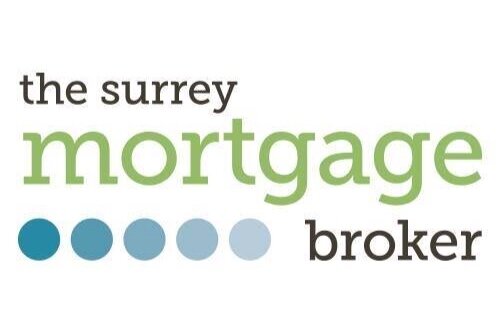Following on from last week’s article about buy to let this week some of the tax issues around buy to let are covered.
Changes landlords need to know about
If you’re considering becoming a landlord and renting a property, or if you’re already in the process of doing so, it’s important to be aware of your tax obligations. Rules on paying tax when renting out your property are ever-changing and can be quite complicated.
As a landlord with an investment property, you’re likely to pay tax at every stage of the life of that investment – when you buy the property, when you let the property, and later when you sell or pass it on. Letting a property is like any other business – if you make a profit, it’s liable to taxation.
In the current 2022/23 tax year, HM Revenue & Customs (HMRC) introduced some important changes to a number of different forms of tax that apply. The tax changes could also affect income landlords receive from other sources.
Key tax changes introduced for the 2022/23 tax year affecting landlords
National Insurance contributions
National Insurance contributions (NICs) increased by 1.25% from 6 April. Rental income is not subject to NICs unless you’re a professional landlord running a property rental business – being a landlord is your main job, you rent out more than one property and buy new properties to rent out. If you are a professional landlord running a property rental business, currently you must pay NICs if your earnings exceed the Class 2 and Class 4 NIC thresholds.
If you’re not a professional landlord but you earn income from other sources upon which you currently pay NICs, for example, if you’re an employee, sole trader or member of an ordinary partnership, your NICs have increased by 1.25%. If you employ people, such an administrator or maintenance person for your property portfolio, your share of their Class 1 NICs increased, while any Class 1A and 1B payments employers pay on employee expenses and benefits have also increased.
Income Tax
Any rent that you receive, any non-refundable deposits or any additional payments that you receive from your tenants, such as the cleaning of communal areas, property repairs or utility bills all class as income and must be declared. The same principle applies for any money that’s kept over from a returnable deposit at the end of the tenancy.
The personal allowance, the amount upon which no Income Tax is payable, is £12,570 during this tax year – this equates to £1,048 a month or £242 a week. The personal allowance limit is £100,000, so if you earn over £100,000 a year, your personal allowance will be reduced by £1 for every £2 earned over the £100,000 limit.
Beyond the personal allowance, in England, Wales and Northern Ireland, the basic rate of 20% is payable on taxable earnings between £12,571 and £50,270 a year, then 40% (the higher rate) on £50,271 to £150,000 and 45% on annual earnings over £150,000. The tax rates in Scotland are different, but the personal allowance is the same.
Tax on dividend income increased by 1.25% from 6 April this year. If you earn any income from dividend payments, after your £2,000 annual allowance, and if you’re a basic rate Income Tax payer, you’ll pay 8.75% tax on dividend payments (7.5% was the previous percentage). If you’re a higher rate Income Tax payer, from 6 April you now pay 33.75% (up from 32.5%) and additional rate Income Tax payers will pay 39.35% (up from 38.1%) on their dividend income.
Value Added Tax
From April this year, landlords with a VAT-registered business with a taxable turnover below the VAT threshold of £85,000 will need to comply with Making Tax Digital (MTD) for VAT requirements. These mean you must maintain digital records using MTD-compatible software and report figures online to HMRC each quarter.
All current Self Assessment taxpayers, which includes private landlords, will need to comply with MTD for Income Tax requirements when they are introduced. Beginning from 6 April 2024, this affects any private landlords who currently file Self Assessment tax returns and will require you to also use MTD-compatible software to maintain digital records of your income and outgoings.
You’ll need to send quarterly updates to HMRC online and submit an end-of-period statement and final declaration, so that your tax liability can be calculated. You’ll no longer need to complete a Self Assessment tax return once MTD for Income Tax Self Assessment is introduced.
Capital Gains Tax
If you’re looking to sell a buy-to-let residential property, you may be subject to a Capital Gains Tax bill depending on the gains you make, rather than the amount you sell the property for. Equally, if you’re letting all, or part of the property, a proportion of any gain when you sell it could be taxable.
In the 2022/23 tax year, landlords and investors who sell a residential property will have 60 days (up from 30 days) to complete the Capital Gains Tax process. This was announced during the Autumn Budget in late 2021, doubling the time property investors have to report any Capital Gains Tax.
Landlord Tax Relief
Buy-to-let mortgage tax relief is now reduced to zero. During the 2022/23 tax year, landlords receive a 20% tax credit on interest payments. It is worth noting that the mortgage restrictions only apply to individuals. That is why many people have chosen to purchase buy-to-let properties through a limited company, where they are effectively taxed on profit rather than income.
Starting or expanding your property portfolio?
Whether starting or expanding your property portfolio, we're here to help. To find out more, contact The Surrey Mortgage Broker – telephone 01252 759233 – email richard@thesurreymortgagebroker.co.uk

